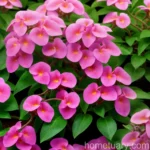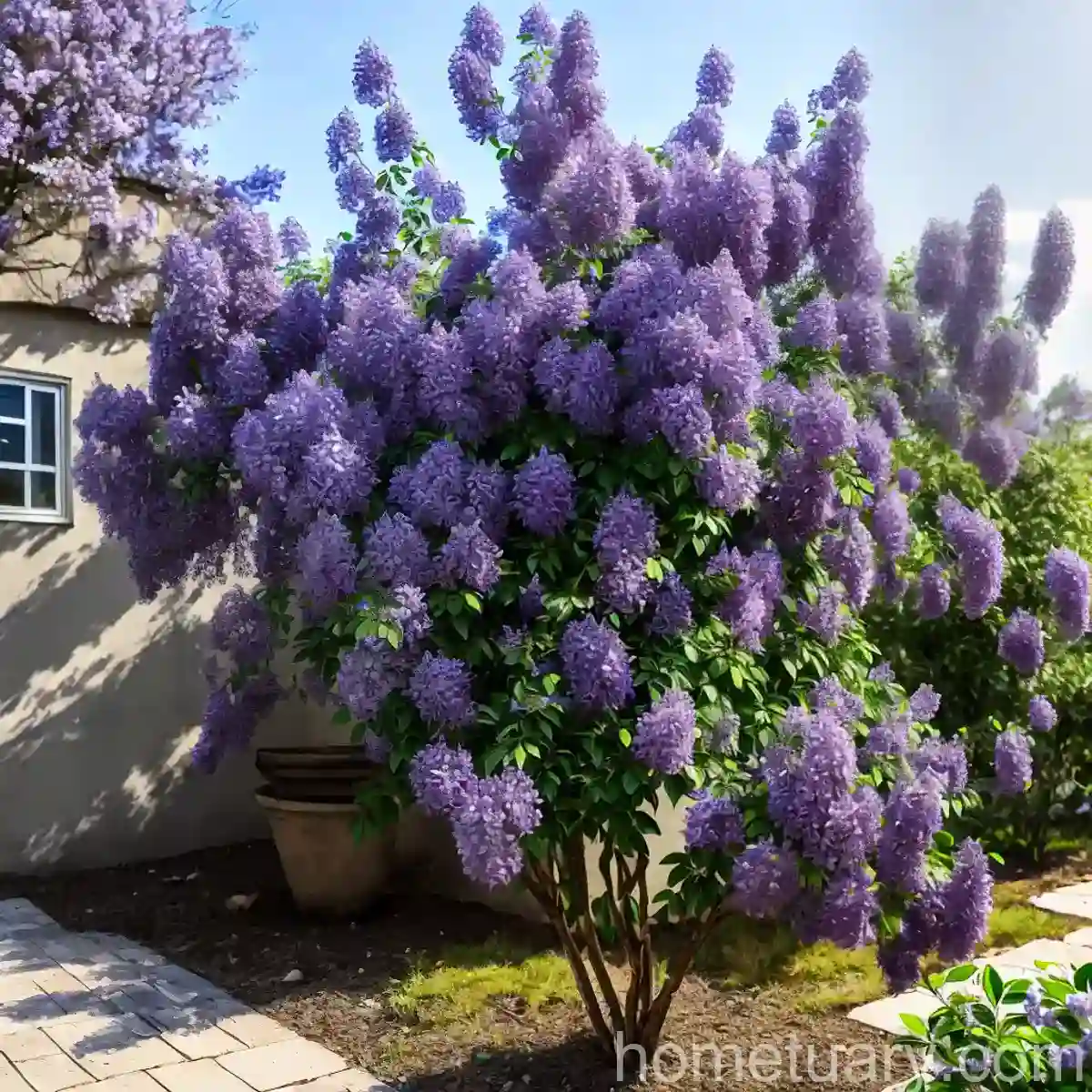Daphne x burkwoodii ‘Silveredge’: A Guide to Cultivation and Care
Daphne x burkwoodii ‘Silveredge’ is an exquisite flowering shrub that is celebrated for its fragrant blooms, attractive foliage, and overall elegance. In this comprehensive guide, we will delve into the cultivation and care of this remarkable plant, covering various aspects such as its cultural requirements, uses in landscaping, propagation methods, and common diseases and pests. Whether you are a seasoned gardener or a newcomer to the world of horticulture, this guide will equip you with the knowledge and insights needed to successfully nurture and appreciate the beauty of Daphne x burkwoodii ‘Silveredge’.
What is Daphne x burkwoodii ‘Silveredge’?
Daphne x burkwoodii ‘Silveredge’ is a hybrid Daphne cultivar that belongs to the Thymelaeaceae family. It is a cross between Daphne cneorum and Daphne caucasica, resulting in a plant with a combination of desirable traits from both parent species. This evergreen shrub is renowned for its compact growth habit, glossy dark green leaves, and clusters of fragrant flowers that adorn its branches, typically in spring. The specific epithet ‘Silveredge’ alludes to the silver margins that embellish the leaves, adding an extra dimension to its ornamental appeal.
Key Takeaways – Daphne x burkwoodii ‘Silveredge’
Before delving into the intricacies of cultivating and caring for Daphne x burkwoodii ‘Silveredge’, let’s summarize the key takeaways associated with this plant:
- Botanical Name: Daphne x burkwoodii ‘Silveredge’
- Common Name: Silveredge Daphne
- Characteristics: Fragrant blooms, glossy green leaves with silver margins, compact growth habit
- Cultural Requirements: Well-draining soil, partial shade, regular watering, and minimal pruning
- Uses: Ornamental shrub for borders, containers, and fragrant gardens
- Challenges: Susceptibility to certain diseases and pests, requires attention to soil moisture and winter protection
With these fundamental aspects in mind, let’s explore the specific cultural and care guidelines for Daphne x burkwoodii ‘Silveredge’ in more detail.
Culture
Soil
Daphne x burkwoodii ‘Silveredge’ thrives in well-draining, humus-rich soil with a slightly acidic to neutral pH. Good drainage is critical for the plant’s health, as it detests waterlogged conditions that can lead to root rot. When planting or repotting, amending the soil with organic matter such as compost or peat moss can enhance both drainage and soil structure, providing an optimal environment for the roots to establish and flourish.
Water
Adequate moisture is essential for the well-being of Daphne x burkwoodii ‘Silveredge’, particularly during the establishment phase and dry spells. However, it is equally important to avoid overwatering, as excessive soil moisture can lead to root suffocation and fungal issues. A balance must be struck, ensuring that the soil remains consistently moist, but not waterlogged. Mulching around the base of the plant can aid in moisture retention while also offering some insulation to the root system.
Sunlight
When it comes to sunlight requirements, Daphne x burkwoodii ‘Silveredge’ thrives in partial shade to full sun conditions. In regions with intense afternoon sun and high temperatures, providing some afternoon shade can prevent the leaves from scorching and help maintain optimal growing conditions. Selecting a site with the right balance of sunlight and shade is crucial for ensuring healthy growth and prolific flowering.
Fertilizer
Applying a balanced, slow-release fertilizer formulated for acid-loving plants in spring can provide the necessary nutrients to support the growth and flowering of Daphne x burkwoodii ‘Silveredge’. Care should be taken to avoid over-fertilization, as excessive nitrogen can promote excessive vegetative growth at the expense of flower bud production. Following the recommended application rates on the fertilizer packaging and ensuring even distribution around the plant’s root zone is key to effective fertilization.
Pruning
Maintenance Pruning
Daphne x burkwoodii ‘Silveredge’ generally requires minimal pruning for maintenance purposes. Regular deadheading of spent flowers, removal of damaged or diseased branches, and light shaping to maintain the plant’s form may be performed as needed. It is advisable to undertake pruning tasks promptly after the flowering period to avoid interfering with the following year’s bloom production.
Hard Pruning
Should rejuvenation or corrective pruning be necessary, it is best conducted in early spring before new growth emerges. Hard pruning can be employed to rejuvenate an overgrown or straggly plant, with the removal of older branches to stimulate new growth and a more compact form. It is important to execute hard pruning judiciously, as the plant may require time to recover and re-establish its vigor.
Propagation
Daphne x burkwoodii ‘Silveredge’ can be propagated through various methods, including:
- Softwood Cuttings: Ideally taken in early summer, softwood cuttings with a heel or at a nodal point can be treated with a rooting hormone and placed in a suitable propagation medium to encourage root development.
- Semi-Hardwood Cuttings: Taken during the late summer to early autumn period, semi-hardwood cuttings from the current season’s growth can be prepared and rooted in a controlled environment to produce new plants.
- Layering: Encouraging a low-growing branch to make contact with the soil and promoting root growth at the point of contact can lead to the formation of a new individual that can be separated and transplanted once established.
Employing these propagation techniques can enable gardeners to multiply their stock of Daphne x burkwoodii ‘Silveredge’ and cultivate new plants for their gardens or for sharing with other enthusiasts.
Container Popularity
The compact nature and ornamental appeal of Daphne x burkwoodii ‘Silveredge’ make it an attractive choice for container gardening. Whether displayed on patios, terraces, or near entrances, the fragrant blooms and striking foliage can add a touch of sophistication to outdoor spaces. When cultivating Daphne x burkwoodii ‘Silveredge’ in containers, attention should be given to the selection of a well-draining potting mix, regular watering to maintain soil moisture, and protection from extreme temperature fluctuations.
Common Diseases
Disease Diagnosis
Daphne x burkwoodii ‘Silveredge’ can be susceptible to certain diseases, including:
- Powdery Mildew: Characterized by a powdery white coating on the leaves, powdery mildew can inhibit photosynthesis and plant vigor if not addressed promptly.
- Leaf Spot: Irregular dark spots on the leaves may indicate the presence of leaf spot diseases, which can be caused by various fungal pathogens.
Common Pests
Pest Identification
Several pests may pose a threat to Daphne x burkwoodii ‘Silveredge’, including:
- Aphids: Small, sap-sucking insects that can cause leaf distortion and yellowing if present in large numbers.
- Scale Insects: Exhibiting a protective shell-like covering, scale insects can weaken the plant by feeding on its sap and excreting honeydew, which can lead to sooty mold formation.
Botanist’s Tips
To ensure the successful cultivation and care of Daphne x burkwoodii ‘Silveredge’, here are some valuable tips from botanists and seasoned gardeners:
- Regularly monitor soil moisture to prevent waterlogging and dehydration, striking a balance to ensure optimal growing conditions.
- Provide sufficient air circulation around the plant to discourage the development of fungal diseases and pest infestations.
- Employ organic and cultural practices to maintain plant health, such as mulching, proper watering, and prudent fertilization.
- Monitor the plant for any signs of stress or decline, and take prompt corrective measures to address any issues that arise.
Fun Facts
- The fragrant blooms of Daphne x burkwoodii ‘Silveredge’ are not only visually appealing but also exude a delightful fragrance, making them a magnet for pollinators and a sensory delight for garden enthusiasts.
Now that we have explored the cultural requirements, uses, propagation methods, common diseases, and pests associated with Daphne x burkwoodii ‘Silveredge’, it is essential to provide additional resources for those seeking more in-depth information on this remarkable plant.
Links to External Resources
For further reading and research on Daphne x burkwoodii ‘Silveredge’, the following resources offer valuable insights and detailed guidance:
- Royal Horticultural Society – Daphne x burkwoodii ‘Silveredge’
- Missouri Botanical Garden – Daphne x burkwoodii ‘Silveredge’
- North Carolina State University – Daphne x burkwoodii ‘Silveredge’
Conclusion
Daphne x burkwoodii ‘Silveredge’ undoubtedly stands out as an enchanting addition to ornamental gardens, fragrant landscapes, and container displays. Its captivating blooms, glossy foliage, and subtle fragrance make it a plant of immense allure for gardening enthusiasts. By adhering to the recommended cultural practices, nurturing this charismatic shrub can be a gratifying experience, yielding a visual and olfactory delight that enriches any outdoor setting.
Keywords: Daphne burkwoodii ‘Silveredge’ plant, Silveredge daphne, Daphne burkwoodii ‘Silveredge’ care, Daphne burkwoodii ‘Silveredge’ characteristics, Growing Daphne x burkwoodii ‘Silveredge’, Daphne burkwoodii ‘Silveredge’ varieties, Daphne burkwoodii ‘Silveredge’ landscaping, Daphne burkwoodii ‘Silveredge’ pruning, Daphne burkwoodii ‘Silveredge’ maintenance, Daphne x burkwoodii ‘Silveredge’ shrub, Daphne x burkwoodii ‘Silveredge’ fragrance, Daphne x burkwoodii ‘Silveredge’ blooms, Daphne x burkwoodii ‘Silveredge’ foliage, Daphne burkwoodii ‘Silveredge’ soil requirements, Daphne burkwoodii ‘Silveredge’ sunlight needs, Daphne burkwoodii ‘Silveredge’ watering guidelines, Daphne burkwoodii ‘Silveredge’ diseases, Daphne x burkwoodii ‘Silveredge’ pests, Daphne burkwoodii ‘Silveredge’ climate suitability, Daphne burkwoodii ‘Silveredge’ container gardening, Daphne x burkwoodii ‘Silveredge’ landscape design, Daphne burkwoodii ‘Silveredge’ hardiness zone, Daphne burkwoodii ‘Silveredge’ propagation methods, Daphne burkwoodii ‘Silveredge’ companion plants, Daphne burkwoodii ‘Silveredge’ seasonal care, Daphne x burkwoodii ‘Silveredge’ evergreen shrub, Daphne x burkwoodii ‘Silveredge’ bloom time, Daphne burkwoodii ‘Silveredge’ growth rate, Daphne x burkwoodii ‘Silveredge’ landscape features, Daphne burkwoodii ‘Silveredge’ water requirements, Daphne burkwoodii ‘Silveredge’ soil preferences, Daphne burkwoodii ‘Silveredge’ foliage color, Daphne x burkwoodii ‘Silveredge’ winter care, Daphne burkwoodii ‘Silveredge’ summer pruning, Daphne x burkwoodii ‘Silveredge’ plant size, Daphne burkwoodii ‘Silveredge’ fertilizer needs, Daphne burkwoodii ‘Silveredge’ pollinators, Daphne burkwoodii ‘Silveredge’ wildlife attractions, Daphne x burkwoodii ‘Silveredge’ landscaping ideas, Daphne burkwoodii ‘Silveredge’ disease resistance, Daphne burkwoodii ‘Silveredge’ sun exposure, Daphne burkwoodii ‘Silveredge’ shade tolerance, Daphne x burkwoodii ‘Silveredge’ leaf texture, Daphne burkwoodii ‘Silveredge’ water retention, Daphne burkwoodii ‘Silveredge’ deer resistance, Daphne burkwoodii ‘Silveredge’ pruning tips, Daphne x burkwoodii ‘Silveredge’ root system, Daphne burkwoodii ‘Silveredge’ container care, Daphne burkwoodii ‘Silveredge’ winter hardiness, Daphne x burkwoodii ‘Silveredge’ soil drainage















